Today’s article comes to us courtesy of Jarlo Ilano, PT, MPT, OCS, physical therapist and co-founder of Gold Medal Bodies.
Squats. I love ‘em. There are probably some states and municipalities where they’ll let me marry them. I’m sure my wife would understand, she knows what they mean to me.
Like with any great love, it was transformative. I was your typical ectomorph asian kid (interesting aside, Teddy Roosevelt called Filipinos “his little brown brothers”. Hard to be offended though, since it was Teddy fricking Roosevelt). Then came squats, like a revelation from the heavens:
“Thou shalt gain thirty pounds of muscle from putting weights on your back and bending your knees!”
Thunderbolts and lightning, it was a big thing.
Tale as old as time: Do your squats, eat more than you can stand, repeat as needed, and you’ll grow. I was lucky enough to learn that early and not get too distracted by everything else.
I was also lucky enough to dial in my form from the start. Attribute it to starting early enough as a kid or genetic heritage, but squatting butt to heels was no big deal. The ability to get to the full range of motion allowed me to get maximal gains from my lifting. Because it was so natural, I didn’t think anything of it.
Later, as I found my career in physical therapy, it became apparent that what was a given for me was a near impossibility for some of my patients.
They couldn’t adequately bend their knees or hips lying down on a table. Asking them to squat down would just lead to a blank stare and a mutter “who does this fool think he is?”
A fool who knows that squatting would solve all their problems! If they could only do it.
Do You Need Additional Flexibility Work?
It’s pretty fashionable right now to poop on any need for stretching when lifting weights. And I agree for the most part, the beauty of weight training is that with proper form, you’ll be going through a good range of motion and that range simply improves with practice.
“Just squat!” is advice that I personally have a hard time arguing against, but I’ve also seen specific stretching work too well to ignore the benefits.
Some examples are the aforementioned people whose inflexibility was downright dangerous. It seems extreme, but there are a quite a few people out there walking around (barely!) like this. Initial basic flexibility work would do them well.
Another example that is less drastic, and I bet applies to a fair amount of you reading this, are trainees who have been working the weights a while already, and still have some issues achieving good depth.
It’s pretty simple: if you can’t get into the positions you’d like, then you have to find a way to get there.
Stretching the right way will make that happen.
Analysis of What Gots to Get Got for an Optimal Squat
A friend of mine started lifting with me and he’s doing awesome, gained 30 pounds bodyweight in the first two months, and in four months his squat went from a shaky 135 for 5, to a solid 260 for 5. I get teary just thinking about it, it’s a beautiful thing.
He hasn’t done any stretching at all and his flexibility has improved significantly, he’s breaking parallel much easier than before, and without weight he’s able to squat down pretty far.
But when the weight gets heavy, he’s not able to hold his positions as well. Of course there is a strength issue, and things are bound to get wonky with enough weight on your shoulders. Decreased hip flexor and hip rotator flexibility are affecting his spinal and pelvis position at the bottom end of his squat. He has a hard time maintaining the proper back “arch” when he drops down to break parallel.
Now this is not going to turn into a screed against the dreaded “rounded back” in lifting. It’s actually not that bad – your discs aren’t going to blow out through your butt if you let your back round out at the bottom of a squat.
And there is definitely benefit to having some of your training in this position, just because we commonly find ourselves there in regular daily life. The ability to hip hinge with both an arched and rounded back is a great skill. That being said, there is a better force transfer from your legs and hips through a solid arched back in a squat. Put simply, you can lift more when your back is set in the right position. And that’s what we want.
Adequate flexibility though the hips is also more of a necessity for your squat depending upon your body type.
Here’s a picture of my friend at the bottom of a squat, at 6’4” he’s got long legs and a relatively shorter torso. Yes that barbell is taking a nice long ride!
And here’s me in all my short legged glory (I’m 5’7 3/4” thank you very much). I also have a ridiculously long torso for my height. Notice how I’m not leaning forward as much as he is even in a low bar squat position.
And here’s the completely vertical torso in the front squat.
Because of his body structure, with any decent weight on the bar, he has to have some forward lean to keep in balance at the bottom of the squat. And that forward lean becomes more excessive if he doesn’t have enough flexibility to rotate his legs outward enough to keep his hips and pelvis at the right angle.
Some Anatomy Action
Here’s a short course in what I mean by flexibility affecting the hip and back angle. There are really just three muscles you need to know about.
Rectus Femoris
The primary flexors of the hip (the muscles bringing your knee up to your chest) are the rectus femoris (part of the quadriceps) and the psoas major. The rectus femoris is why you feel more of a stretch in your quads when you pull your foot behind you with your hands. It crosses the knee and the hip and gets stretched over both joints.
Psoas
The psoas is the hip flexor that most affects your back position, because it actually attaches up past your pelvis and onto the front of lower part of your spine. Because of the levers and angles, when you are standing tall the psoas helps extends your spine (arches your back). But when you are bent forward it helps flex your spine (rounds your back). So, if your psoas is too tight you can have an arch in your back standing tall, but when you bend forward (as you’ll need to in a back squat), it will round your back out at the bottom.
Piriformis
The main hip rotator that we need to know about in regards to squatting position is the piriformis. It attaches to the front your sacrum (the bone right below the low back) and pelvis to the hip, and rotates your hip out. But, at an angle of more than 90 degrees, it reverses action and rotates your hip inward. So, when you break parallel in the squat, a tight piriformis makes it harder to keep your knees out in the right position over your knees. And the attachment to the sacrum can cause a more rounded back as well.
Adequate flexibility in these three areas not only helps you achieve the proper squat depth, it also keeps your hips and thighs as prime movers versus the load shifting to the much smaller low back muscles.
So now you have the benefit of both a deeper squat and better positioning to lift heavier weight. Not a bad deal at all.
How To Improve Squat-Specific Flexibility
I’m a big proponent of specific targeting in flexibility training. Knowing exactly what you need to work on gets you where you want to be quicker and with less wasted energy.
You want to get better at lifting and gaining muscle, not better at stretching.
It seems everyone has a vague idea of “yeah my hamstrings and calves are tight, I should work on those”, and that’s nice, but you’ll be much better off if you decide on a movement goal, and work on what you need to improve that particular goal. It’s not so much specificity of training as it’s a proper understanding of training.
You should have a good reason for every single thing you do in your training, otherwise why do it?
Focused Flexibility Protocol
Here’s the basic protocol I recommend for zeroing in on specific flexibility issues:
- Get into the position
- Short hold 10 to 20 seconds
- Dynamic contraction of the muscles in and out of stretch position for 10 repetitions
- Short hold 10 to 20 seconds
- Another dynamic contraction of 10 repetitions
- For this last hold, you may choose to hold for a longer period, 30 seconds to greater than a minute.
- To get out of the stretch, perform the same dynamic contraction to maintain tension as you return to neutral.
You’ll perform the four exercises below after each training session.
Lounge Chair
This first stretch will help a lot of you that have trouble carrying the bar in right position on your back. If your shoulder flexibility isn’t the best, then you are probably holding the bar with your hands farther apart than optimal. Having your hands closer together keeps your upper body tight and solidly supporting the barbell, this is very important once you are into the heavier weights.
- Sit in front of an elevated surface and place your hands behind you.
- Keep chest up and squeeze your shoulder blades together.
- Dynamic action is squeezing the shoulder blades together while pushing down through your hands and breathing in deeply.
Kneeling Lunge
Beginning:
Ending:
This stretch is great for improving hip flexor flexibility and will help you maintain a better back position out of the bottom of the squat.
- Maintain a flattened lumbar spine (posterior pelvic tilt). The foot of your front leg should be out far enough so that when you shift forward your knee is in a comfortable position. Keep your hips and shoulders square.
- Dynamic action is straightening back knee and lengthening heel backwards, do this while keeping your upper body is still and stable.
Modified Pigeon
This stretch works on your hip rotators, and helps to keep your knees, hips, and pelvis in the best position for strength rising out of the bottom.
- Front leg bent and shin parallel to hips (90 degree knee angle). Chest up, hinge forward at hip and pull your body over the leg.
- Dynamic action is pushing the side of your knee into the ground.
Modified Downward Dog
Some people have trouble with squat depth because of tight ankles, especially if they end up squatting with a forward body lean. This calf stretch should help.
- Downward Dog yoga pose position, but with feet closer together and one leg forward for stability and weight shift.
- Dynamic action is to press the back leg’s heel down, while lifting arch up (weight on the outside of the foot).
Practice Makes Perfect
Like almost everything in life, you’ll get better results with consistent effort.
You don’t need to stretch for an hour a day to get results. In fact, too much stretching can actually cause more problems that it solves.
Just try to get in the habit of performing these stretches three or four times a week – at the very least, do them after your squat sessions. It only takes about ten minutes, and over a couple of weeks, you’ll begin to notice better position and greater depth in your squat technique.
Squats are necessary for optimum hip and leg development and for achieving your fitness goals. Whether you’re working twenty reps or heavy triples, make sure your flexibility isn’t keeping you from getting into the right groove with your squats. It’s hard enough to get under that bar and do what you have to do.
Take a few minutes out of your day to stretch, so that you can get the most out of the best exercise you can do.
Jarlo Ilano, PT, MPT, OCS, is a physical therapist and co-founder of Gold Medal Bodies. He recently created Focused Flexibility, a program that shows you how to customize a flexibility routine for your specific needs.
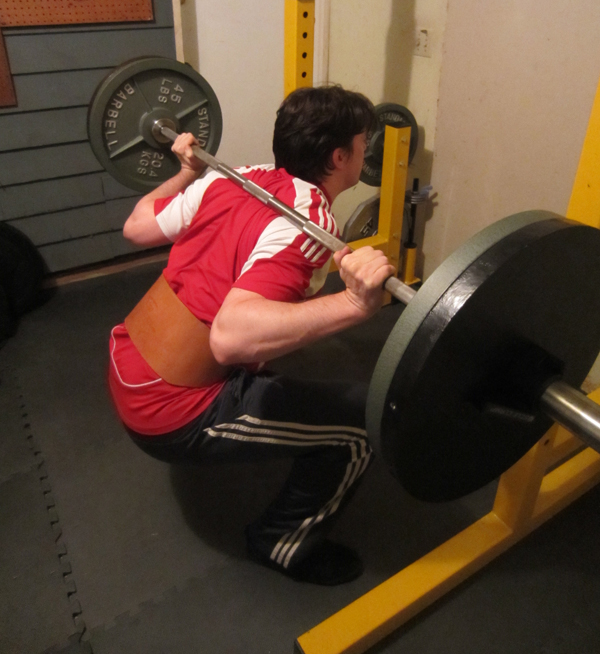
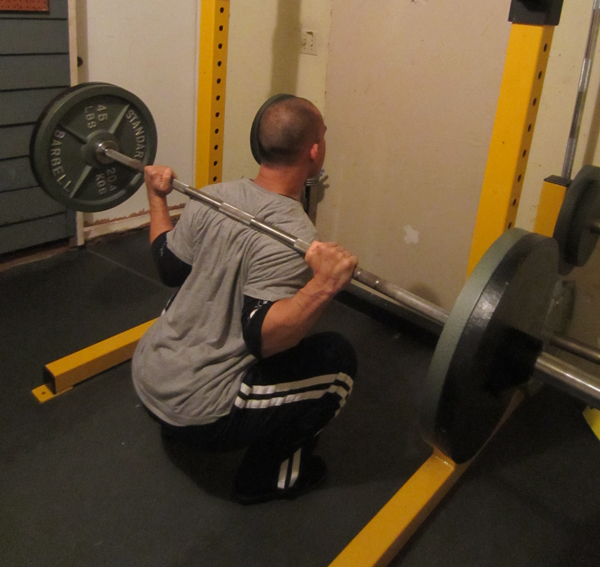
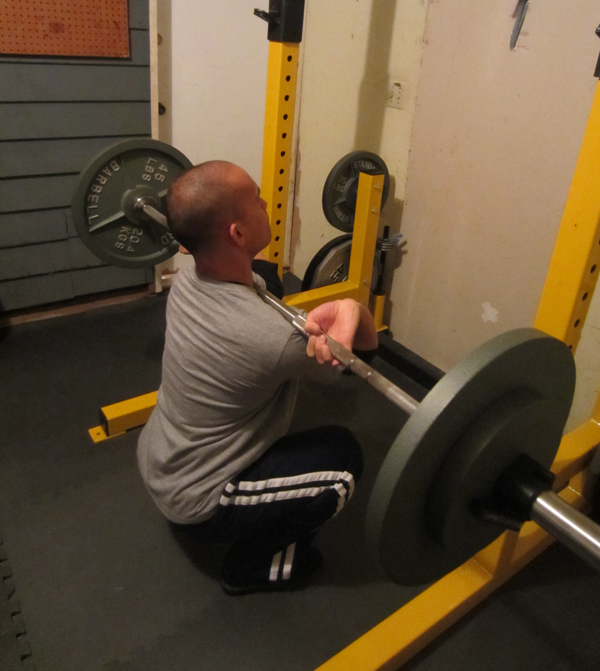
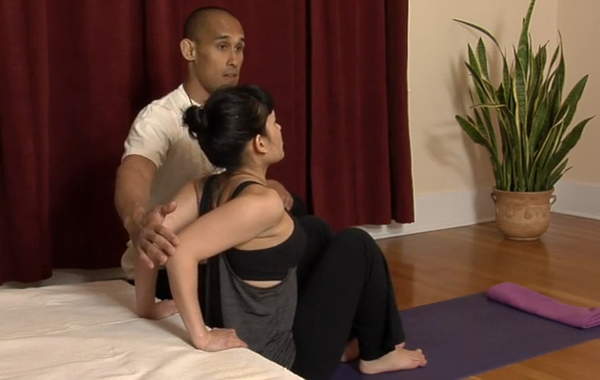
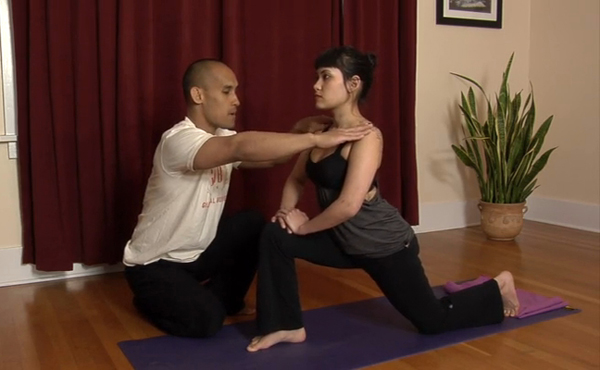
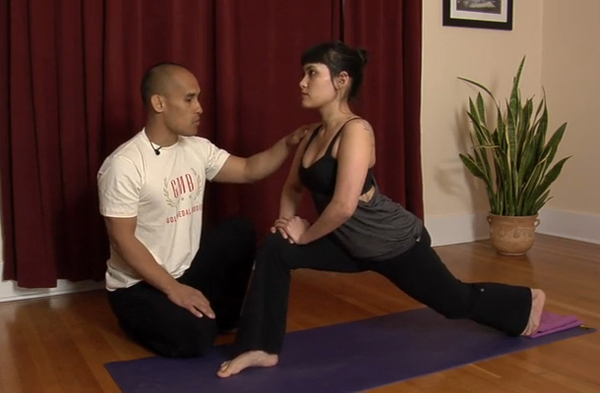
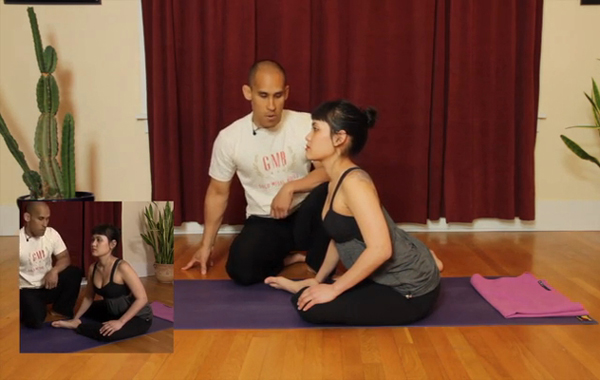


These were some really good tips. I have struggled quite a bit with a good front squat position, so I’ll definitely use this to help improve it. Thanks!
Thanks for this article! I’ve always struggled with squat depth and lately its been starting to really annoy me. I can squat 135 to parallel without too much trouble, yet I can’t squat butt to heels, even with zero weight, without toppling over one way or the other. I am a 5’9″ female but my legs are very long and gangly and I have a high center of gravity. So much so that my strength coach for college swimming used to have me use the riser for box squats reserved for the girls 6′ and up, because of my “structure.” Lately, though, I’ve become suspicious that my lack of flexibility is also to blame, and I will definitely be trying the stretches you suggest!
What are your thoughts on paused squats for getting out of the hole?
I like them. If you can keep tight at the bottom, its a good way to work harder. But I wouldn’t do these separate or in place of regular squats, your technique may change in the squat because its so different. You still want to be proficient in coming out of the hole with a good stretch reflex. A couple of back off sets at the end of your squat workout with less weight would be a good way to incorporate pause squats.
I will definitly try theses sretches. Btw the new look of the site is great !
Thanks for having us on your site JC!
Jarlo,
Excellent post. Sound advice and a bit of style in delivery – perfect. I’m a cubicle dweller and am surrounded by devices (office chairs, conference rooms, etc) all aimed at robbing us of our mobility. These stretches are great.
Now … go forth and squat!
JC, I love the new logo. Not sure when you put it up, but I like it.
-Troy
Thanks Troy! Yes, office work is slowly killing people I think. I had a patient tell me that when he went to the cardiologist about his chest pain, the doctor said “oh yeah I see that a lot, I call it Microsoft syndrome”. Apparently he sees all these guys that have irritation of the cartilage around the chest and ribs from their poor sitting posture for hours and hours!